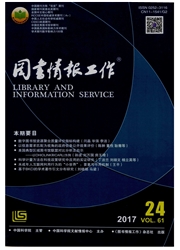

 中文摘要:
中文摘要:
[目的/意义]从纵向演化与横向区域比较两个维度,探究包括中国在内的65个“一带一路”沿线国家的科研合作情况,为我国与沿线国家开展科研合作和政策制定提供参考。[方法/过程]以Web of Science核心合集作为数据来源,抓取65个国家20年间近240万条学术论文的跨国合作数据;使用社会网络分析方法,构建“一带一路”沿线国家的论文合著网络。然后从网络整体、核心国家、科研小团体三方面分析该网络现状及演化过程,并对核心国家之间的主要科研合作内容进行探究。[结果/结论]整体来看,合作网络的密度呈波动上升的趋势,这说明国家间的科研合作规模越来越大,但部分国家在科研合作开放程度上表现不佳,在“一带一路”沿线国家中衰弱型和沉睡型国家较多;中国、俄罗斯、波兰、捷克共和国、匈牙利、印度和土耳其的核心度一直较高,合作内容多属物理学及相关学科;除核心国家之外的“一带一路”沿线国家与地理位置上邻近的国家合作较多,东南亚、欧洲、中亚、中东等地区的区域聚集特征比较明显。
 英文摘要:
英文摘要:
[Purpose/significance] This study explores the scientific collaboration networks among countries along the "the Belt and Road Initiative" from the perspective of dynamical evolution, in order to provide suggestions for techno- logical cooperation and policy making. [ Method/process ] First, it builds the to-country network by social network meth- od based on published paper. Then, it analyzes the present situation and evolution process from three aspects: general sit- uation, the core countries, and the research group. [ Result/conclusion] Results show that (i) the scale of cooperation was more and more big, but some countries didn' t open enough. (ii) The core countries of this network are China, Rus- sia, Poland, Czech Republic, Hungary, India and Turkey. Physics related subjects are the commonest cooperation. (iii) Scientific collaborations among "the Belt and Road Initiative" countries are closely related to their geographical location.
 同期刊论文项目
同期刊论文项目
 同项目期刊论文
同项目期刊论文
 期刊信息
期刊信息
